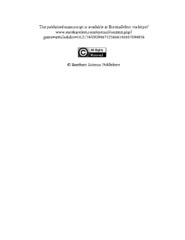Приказ основних података о документу
Dual Inhibitors as a New Challenge for Cancer Multidrug Resistance Treatment
| dc.creator | Stanković, Tijana | |
| dc.creator | Dinić, Jelena | |
| dc.creator | Podolski-Renić, Ana | |
| dc.creator | Musso, Loana | |
| dc.creator | Stojković Burić, Sonja | |
| dc.creator | Dallavalle, Sabrina | |
| dc.creator | Pešić, Milica | |
| dc.date.accessioned | 2020-09-16T11:36:47Z | |
| dc.date.available | 2020-09-16 | |
| dc.date.issued | 2019 | |
| dc.identifier.issn | 0929-8673 | |
| dc.identifier.uri | http://www.eurekaselect.com/162878/article | |
| dc.identifier.uri | https://radar.ibiss.bg.ac.rs/123456789/3875 | |
| dc.description.abstract | Background: Dual-targeting in cancer treatment by a single drug is an unconventional approach in relation to drug combinations. The rationale for the development of dualtargeting agents is to overcome incomplete efficacy and drug resistance frequently present when applying individual targeting agents. Consequently, -a more favorable outcome of cancer treatment is expected with dual-targeting strategies. Methods: We reviewed the literature, concentrating on the association between clinically relevant and/or novel dual inhibitors with the potential to modulate multidrug resistant phenotype of cancer cells, particularly the activity of P-glycoprotein. A balanced analysis of content was performed to emphasize the most important findings and optimize the structure of this review. Results: Two-hundred and forty-five papers were included in the review. The introductory part was interpreted by 9 papers. Tyrosine kinase inhibitors’ role in the inhibition of Pglycoprotein and chemosensitization was illustrated by 87 papers. The contribution of naturalbased compounds in overcoming multidrug resistance was reviewed using 92 papers, while specific dual inhibitors acting against microtubule assembling and/or topoisomerases were described with 55 papers. Eleven papers gave an insight into a novel and less explored approach with hybrid drugs. Their influence on P-glycoprotein and multidrug resistance was also evaluated. Conclusion: These findings bring into focus rational anticancer strategies with dual-targeting agents. Most evaluated synthetic and natural drugs showed a great potential in chemosensitization. Further steps in this direction are needed for the optimization of anticancer treatment. | en |
| dc.language.iso | en | sr |
| dc.publisher | Sharjah: Bentham Science Publishers | sr |
| dc.relation | info:eu-repo/grantAgreement/MESTD/Integrated and Interdisciplinary Research (IIR or III)/41031/RS// | sr |
| dc.rights | embargoedAccess | sr |
| dc.source | Current Medicinal Chemistry | sr |
| dc.subject | targeted anticancer therapy | sr |
| dc.subject | multidrug resistance | sr |
| dc.subject | P-glycoprotein | sr |
| dc.subject | tyrosine kinase inhibitors | sr |
| dc.subject | naturalbased drugs | sr |
| dc.subject | microtubule interacting agents | sr |
| dc.subject | topoisomerase inhibitors | sr |
| dc.subject | hybrid compounds | sr |
| dc.title | Dual Inhibitors as a New Challenge for Cancer Multidrug Resistance Treatment | en |
| dc.type | article | sr |
| dc.rights.license | ARR | sr |
| dcterms.abstract | Даллавалле, Сабрина; Пешић, Милица; Подолски-Ренић, Aна; Динић, Јелена; Муссо, Лоана; Станковић, Тијана; Стојковић Бурић, Соња; | |
| dc.rights.holder | © 2019 Bentham Science Publishers | sr |
| dc.citation.issue | 33 | |
| dc.citation.volume | 26 | |
| dc.description.note | The published manuscript is available at EurekaSelect via [http://www.eurekaselect.com/openurl/content.php?genre=article&doi=10.2174/0929867325666180607094856]. | |
| dc.description.note | Related to: [https://radar.ibiss.bg.ac.rs/handle/123456789/3567]. | |
| dc.identifier.doi | 10.2174/0929867325666180607094856 | |
| dc.identifier.pmid | 29874992 | |
| dc.identifier.scopus | 2-s2.0-85076318971 | |
| dc.identifier.wos | 000500555600005 | |
| dc.citation.spage | 6074 | |
| dc.citation.epage | 6106 | |
| dc.type.version | acceptedVersion | sr |
| dc.identifier.fulltext | https://radar.ibiss.bg.ac.rs/bitstream/id/7285/Dual_Inhibitors_as_a_New_Challenge_for_Cancer_Multidrug_Resistance_Treatment.pdf | |
| dc.citation.rank | M21 |

